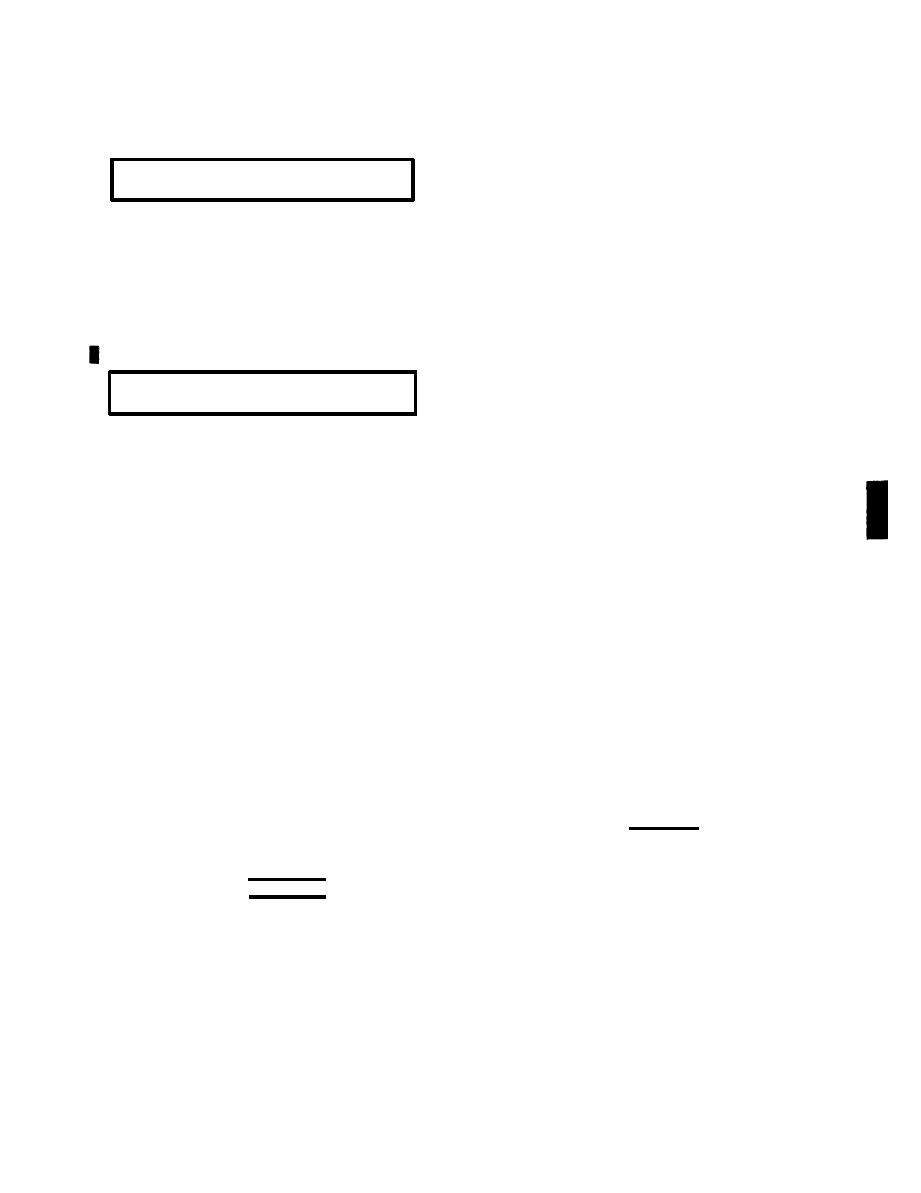 |
|||
|
|
|||
|
Page Title:
Section Il. PREVENTIVE MAINTENANCE CHECKS AND SERVICES (PMCS) |
|
||
| ||||||||||
|
|
 TM 10-3930-638-10
Section Il. PREVENTIVE MAINTENANCE CHECKS AND SERVICES (PMCS)
Clean as you work and as needed. Use dry cleaning
solvent (P-D-680) on all metal surfaces. Use soap and
RECORDS
water when you clean rubber or plastic material.
Every mission begins and ends with the paperwork. There
(2) Bolts, nuts and screws: Check them all for
isn't much of it, but you have to keep it up. The forms
obvious looseness, missing, bent or broken condition.
and records you fill out have several uses. They are a
You can't try them all with a tool, of course, but look for
permanent record of the services, repairs and modifications
chipped paint, bare metal or rust around bolt heads. If
made on your vehicle. They are reports to organizational
you find one you think is loose, tighten it, or report it to
maintenance and to your Commander. And they are a
organizational maintenance if you can't tighten it.
checklist for you when you want to know what is wrong
(3) Welds: Look for loose or chipped paint, rust or
with the vehicle after its last use, and whether those
gaps where parts are welded together. If you find a bad
faults have been fixed. For the information you need on
weld, report it to organizational maintenance.
forms and records, see DA Pam 738-750.
(4) Electric wires and connectors: Look for
cracked or broken insulation, bare wires and loose or
CHECKS AND SERVICES
broken connectors. Tighten loose connectors and make
sure the wires are in good shape.
a. Do your before(B) PREVENTIVE MAINTENANCE
just before you operate the vehicle. Pay attention to the
(5) Hoses and fluid lines: Look for wear, damage
CAUTIONS and WARNINGS.
and leaks, and make sure clamps and fittings are tight.
Wet spots show leaks, of course, but a stain around a
b. DURING checks and services(D) of PREVENTIVE
fitting or connector can mean a leak. If a leak comes
MAINTENANCE will be performed while the equipment
from a loose fitting or connector, tighten it. If some-
and/or its component systems are in operation.
thing is broken or worn out, report it to organizational
c. Do your after (A) PREVENTIVE MAINTENANCE
maintenance.
right after operating the vehicle. Pay attention to the
j. It is necessary for you to know how fluid leakage
CAUTIONS and WARNINGS.
affects the status of your vehicle. The following are
d. Do your weekly (W) PREVENTIVE
definitions of the types/classes of leakage you need to
MAINTENANCE weekly.
know to be able to determine the status of your vehicle.
Learn, then be familiar with them and REMEMBER-
e. Do your monthly (M) PREVENTIVE
WHEN IN DOUBT, NOTIFY YOUR SUPERVISOR!
MAINTENANCE once a month.
Leakage Definitions for Crew/Operator PMCS
f. If something doesn't work. troubleshoot it with
the instructions in this manual or notify your supervisor.
Class I Seepage of fluid (as indicated by wetness or
discoloration) not great enough to form drops.
g. Always do your PREVENTIVE MAINTENANCE
in the same order so it gets to be a habit. Once you've
Class II Leakage of fluid great enough to form drops
had some practice, you'll spot anything wrong in a hurry.
but not enough to cause drops to drip from
item being checked/inspected.
h. If anything looks wrong and you can't fix it, write
it on your DA Form 2404. If you find something
Class III Leakage of fluid great enough to form drops
seriously wrong. report it to organizational maintenance
that fall from the item being checked, inspected.
RIGHT NOW.
CAUTION
i. When you do your PREVENTIVE
EQUIPMENT OPERATION IS ALLOWABLE
MAINTENANCE, take along the tools you need to make
WITH MINOR LEAKAGES (CLASS I OR II).
all the checks. You always need a rag or two.
OF COURSE, CONSIDERATION MUST BE
WARNING
GIVEN TO THE FLUID CAPACITY IN THE
lTEM/SYSTEM BEING CHECKED/
Dry cleaning solvent, used to clean parts is
INSPECTED. WHEN IN DOUBT, NOTIFY
potentially dangerous to personnel and property.
YOUR SUPERVISOR.
Do not use near open flame or excessive heat.
Flash point of solvent is 138 degrees F.
CLASS Ill LEAKS SHOULD BE CORRECTED
IMMEDIATELY OR REPORTED TO YOUR
SUPERVISOR OR ORGANIZATIONAL
(1) Keep it clean: Dirt, grease, oil and debris
MAINTENANCE.
only get in the way and may cover up a serious problem.
Change 1
|
|
Privacy Statement - Press Release - Copyright Information. - Contact Us |